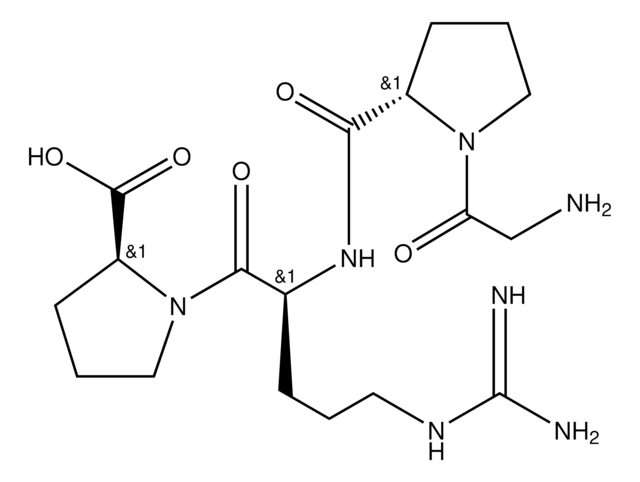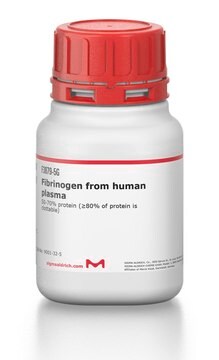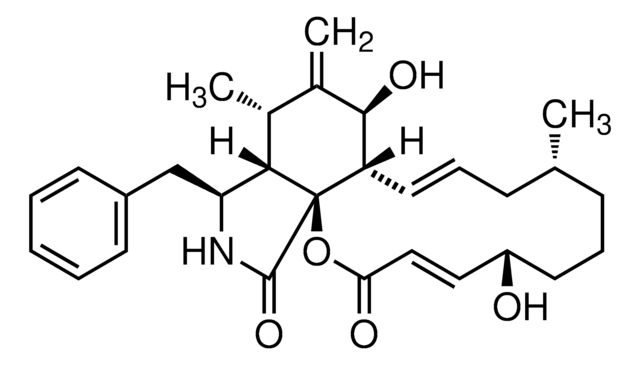G5779
Gly-Pro-Arg-Pro amide
≥97% (HPLC)
Sinónimos:
GPRP amide, Glycine-Proline-Arginine-Proline amide, Glycyl-L-prolyl-L-arginyl-L-prolinamide
About This Item
Productos recomendados
Análisis
≥97% (HPLC)
temp. de almacenamiento
−20°C
cadena SMILES
NCC(=O)N1CCC[C@H]1C(=O)N[C@@H](CCCNC(N)=N)C(=O)N2CCC[C@H]2C(N)=O
InChI
1S/C18H32N8O4/c19-10-14(27)25-8-3-6-13(25)16(29)24-11(4-1-7-23-18(21)22)17(30)26-9-2-5-12(26)15(20)28/h11-13H,1-10,19H2,(H2,20,28)(H,24,29)(H4,21,22,23)/t11-,12-,13-/m0/s1
Clave InChI
SCCTZYGEMPQRCV-AVGNSLFASA-N
Información sobre el gen
human ... FN1(2335)
mouse ... FN1(14268)
rat ... FN1(25661)
Amino Acid Sequence
Descripción general
Aplicación
- as a constituent of buffer during fluid-phase and bound thrombin inhibition assays, to determine the activity of thrombin
- for blocking fibrin polymerization and preventing fibrin clot formation in presence of α-thrombin, in blood obtained from mice
- during preparation of human soluble fibrin, to block the polymerization of soluble fibrin
Acciones bioquímicas o fisiológicas
Envase
Código de clase de almacenamiento
11 - Combustible Solids
Clase de riesgo para el agua (WGK)
WGK 3
Punto de inflamabilidad (°F)
Not applicable
Punto de inflamabilidad (°C)
Not applicable
Equipo de protección personal
Eyeshields, Gloves, type N95 (US)
Certificados de análisis (COA)
Busque Certificados de análisis (COA) introduciendo el número de lote del producto. Los números de lote se encuentran en la etiqueta del producto después de las palabras «Lot» o «Batch»
¿Ya tiene este producto?
Encuentre la documentación para los productos que ha comprado recientemente en la Biblioteca de documentos.
Nuestro equipo de científicos tiene experiencia en todas las áreas de investigación: Ciencias de la vida, Ciencia de los materiales, Síntesis química, Cromatografía, Analítica y muchas otras.
Póngase en contacto con el Servicio técnico







